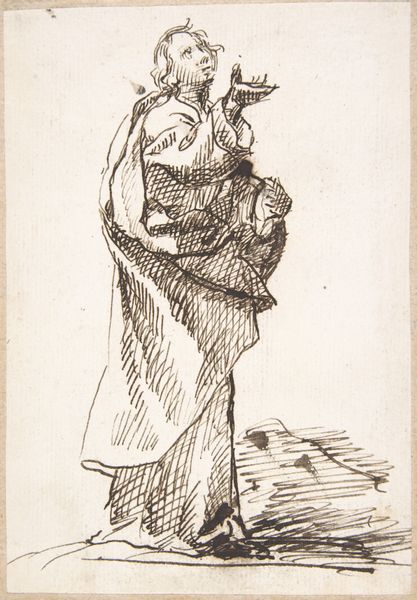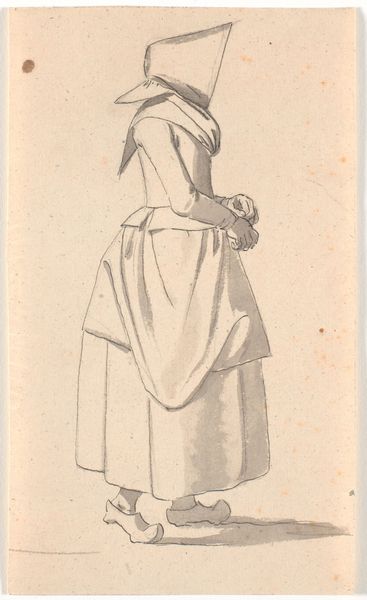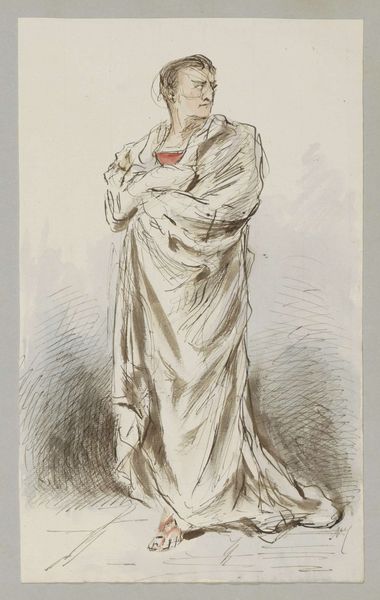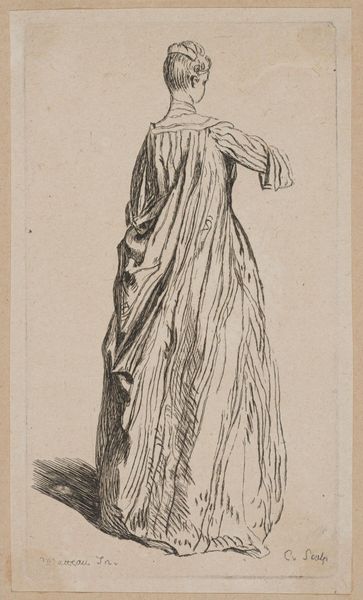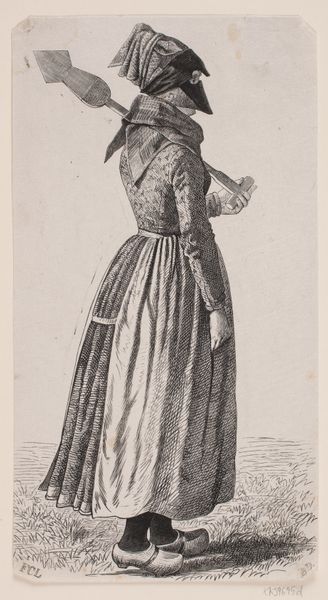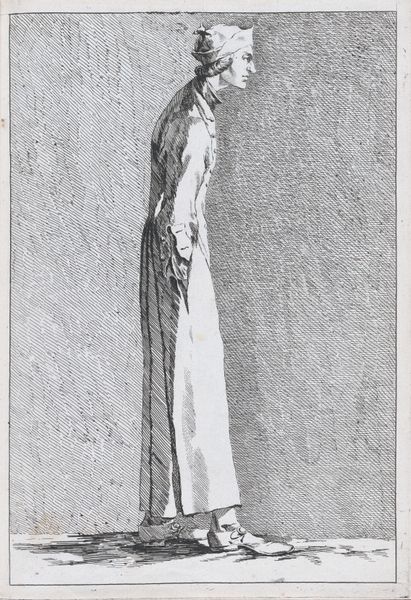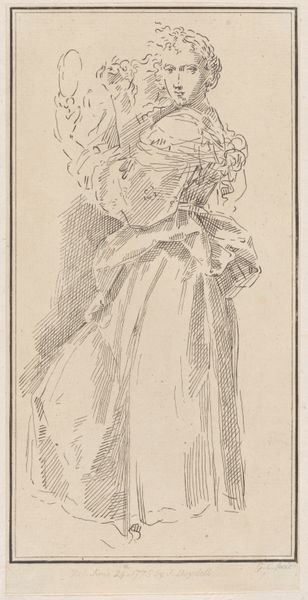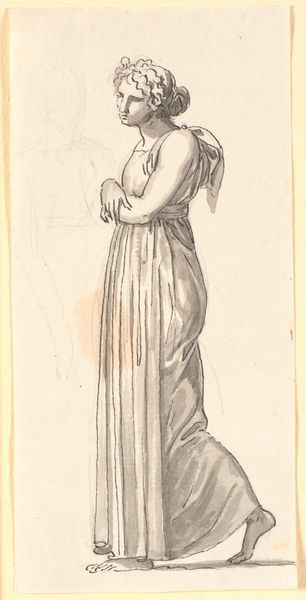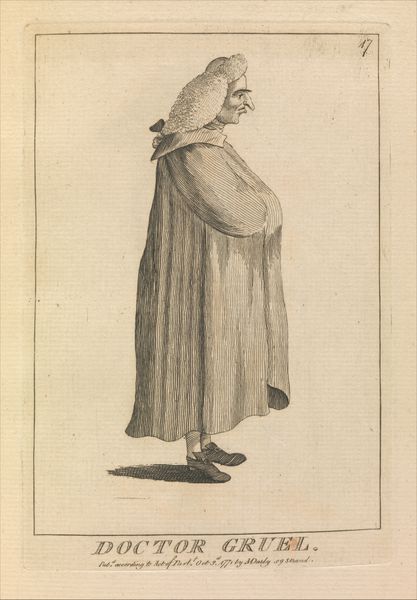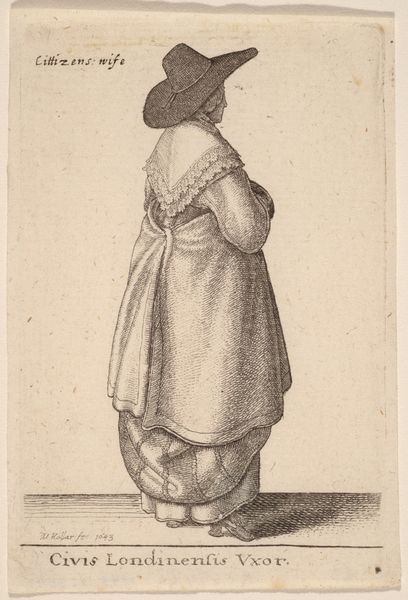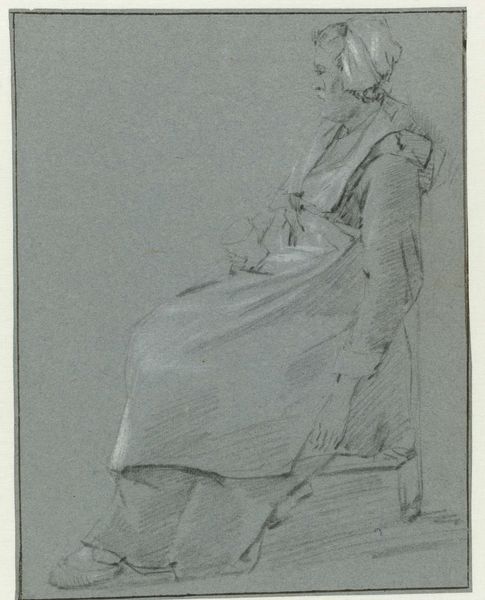
A Welsh Landlady, from "Remarks on a Tour to North and South Wales, in the year 1797" 1800
0:00
0:00
drawing, print, engraving
#
portrait
#
drawing
# print
#
caricature
#
caricature
#
history-painting
#
engraving
Dimensions: Sheet: 8 3/8 × 4 7/8 in. (21.3 × 12.4 cm)
Copyright: Public Domain
Curator: John Hill's "A Welsh Landlady," dating to 1800, part of his "Remarks on a Tour to North and South Wales, in the year 1797," presents us with quite the character study. Editor: It does. My immediate reaction is to its roughness—it feels almost brutal in its simplicity, laid bare with this etching and engraving. I can't help but focus on the visual economy, like she is an algebraic equation or sum total. Curator: Hill uses caricature to comment on social hierarchies, reflecting the way the Welsh were viewed by the English at the time. Think of the context: Wales being positioned at the periphery of the Empire. How might that perspective skew representation? Editor: I am not so sure. Consider the chain of keys prominently displayed. What were the social relations involved in key-holding and lock-making in that society? A means of production right on display on a landowner? And her shape! Consider the materials consumed to keep such bulk on her. It implies the landlord relationship at play. Curator: Precisely! It is vital to look at this representation within the matrix of colonial power. How does the artist emphasize features that contribute to an "othering" narrative, setting up this landlady as different, perhaps even lesser? What did Welsh people actually look like versus stereotypes imposed on them? Editor: We're aligned there, though the question still resides for me in material terms: it asks what did labor look like? This engraving represents resources and, by implication, labor practices and access. How does class and labor influence her image of authority? This landlady does not lack...volume. Curator: Right, and think of it now, through a feminist lens. How are older women depicted? What stereotypes does this potentially perpetuate? This caricature invites critical exploration of gendered and ethnic representation in a colonial context. Editor: I see the material dimensions feeding right back into questions of power and representation that you highlight, demonstrating the entanglement between seemingly disparate approaches to understanding the artwork. The labor required to produce wealth makes it manifest.
Comments
No comments
Be the first to comment and join the conversation on the ultimate creative platform.
